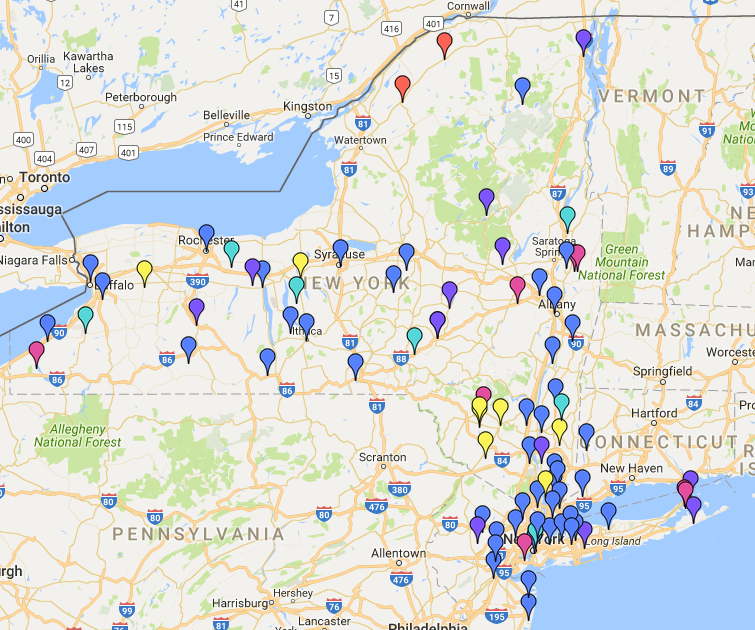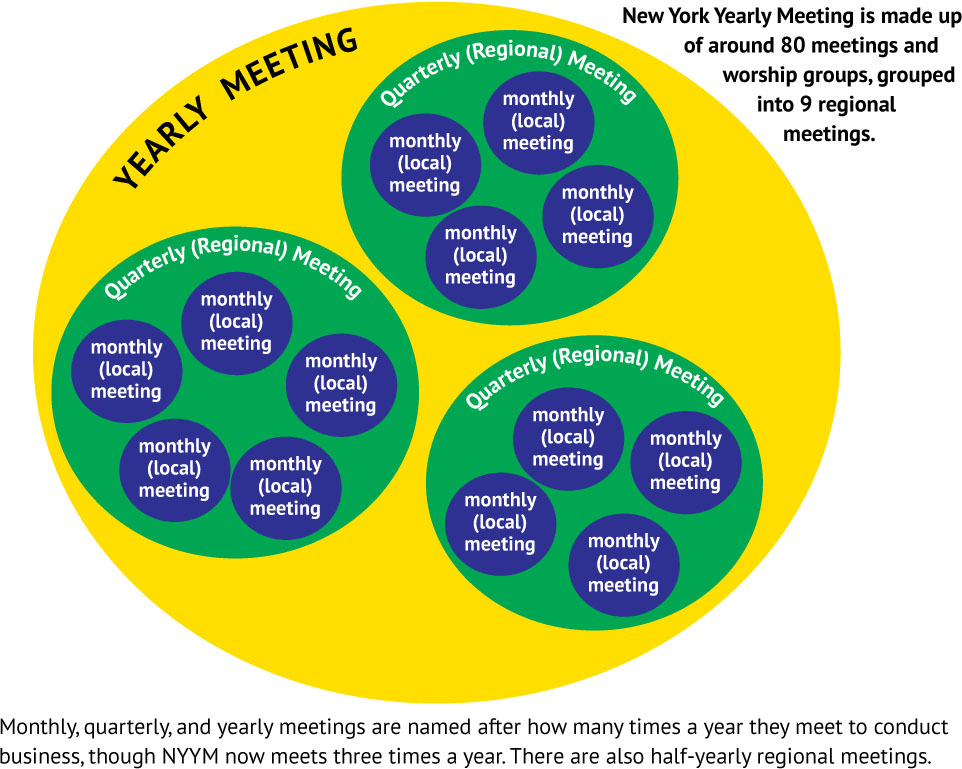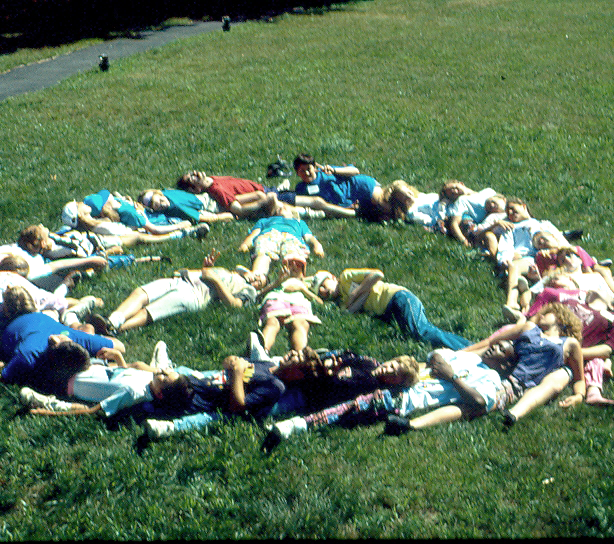Welcoming fellowship
New York Yearly Meeting seeks to be a welcoming and inclusive community. We welcome into our fellowship people of all backgrounds and interests, all ages, races, and ethnicities, persons of any social station, sexual preference, or gender identity. We seek to embody in our community life Jesus' commandment to love one another, deriving our very name as the Religious Society of Friends from his discourse on love in John 15:9–17.
Membership
Friends welcome into membership those whose declarations and ways of life manifest such unity with Friends' views and practices that both meeting and member can expect to enjoy full religious fellowship. We invite persons who are interested in learning more about the meaning of membership in a Quaker meeting and how the membership process works to read the Membership section of our book of Faith and Practice.
Community Life in New York Yearly Meeting
In our life together as a community, Friends seek to integrate “worship and work, faith and practice [in order to] strengthen and challenge each other. Through this fellowship God’s love and power can work towards the healing of the world.” (Faith & Practice, p 11)
Divine guidance. The key to integrating the life of the spirit and the life of the community lies in what Friends have traditionally called “gospel order”, that is, ordering the life of the community in the Light of God’s presence, guidance, and love.
Governance. Thus we conduct even mundane “business” affairs in meetings for worship, though with a focus on the life of the meeting, and we make all decisions according to our sense of how the Holy Spirit is leading us, rather than by voting, and carefully construct minutes that express the sense of the meeting.
Pastoral care of meetings. Just as individuals sometimes need spiritual and temporal comfort and care from their local meetings, so meetings sometimes need spiritual and temporal care from the yearly meeting. The yearly meeting’s trustees manage some funds that can help with meetinghouse and burial ground repairs and upkeep, and the yearly meeting stands ready to help meetings with conflicts and other issues when they arise.
Conflict. For conflicts inevitably arise in any community. We seek to respond to conflict creatively, invoking when it seems appropriate the three-step process initiated by Jesus for his disciples, as recounted in Matthew 18: 15–17. As in all our corporate affairs, we seek the guidance of our Guide, and rest in the promise that “wherever two or three are gathered in my name, there am I also” (Matthew 18:20).
Further, the yearly meeting’s Committee on Conflict Transformation is prepared to help meetings with difficult situations through their workshop, Conflict in Quaker Meetings: Crisis or Opportunity?, and with other forms of more direct and personal aid.
Corporate testimonies
We seek to model as a community the testimonies that we have received of the Spirit, whose truths have been tested, and which shape our vision for the world we want to live in. Thus we seek to treat all equally, to speak and act with complete integrity, to renew the natural world and relieve the oppressive burdens we place upon it, to live simply, and make peace wherever we can. Click the following to read New York Yearly Meeting's testimony on community in our book of Faith and Practice.
Support of Individual Leadings and Ministries
The community plays an important role in individual calls to ministry. When a Friend feels led to follow some leading, the community is there to help discern its truth and its direction, and to provide support and oversight once the meeting finds itself in unity with the Friend’s concern. When a Friend’s ministry takes her outside the yearly meeting or would flourish more if it had resources that are beyond a local meeting’s ability to provide, the yearly meeting often can serve with both discernment and support.
Visitation
Visiting one another’s meetings shares the Spirit around in a wonderful way. It builds up the meetings that are visited; it builds up the meetings of the visitors as they return home; it builds up the regional meetings and the yearly meeting by knitting us all together.
Advices and Queries
New York Yearly Meeting has written Advices and Queries for both meetings and individuals to use as aids to improvement and reflection. Some meetings read the Advices and Queries occasionally or regularly in meeting for worship and/or in meeting for business in worship.
State of the Society
Every year, the yearly meeting asks local meetings to write state of the meeting reports and a yearly meeting committee synthesizes the submissions into a State of the Society Report for the whole yearly meeting. Click the following to read our State of Society Reports.
Yearbooks
Every year, the yearly meeting publishes a Yearbook that records the minutes of the yearly meeting’s sessions for the previous year, the reports of the yearly meeting’s committees on their activities throughout the year, financial information and a statistical report, plus a list of Friends under appointment to yearly meeting committees by committee and the contact information and officers of each local meeting and worship group. Click the following to read Yearbooks from 2011 to the present.
Organization
New York Yearly Meeting is comprised of standing committees and ad hoc working groups organized into four “sections”: Ministry, Nurture, General Services, and Witness, plus officers and some paid staff. New York Yearly Meeting is incorporated as a religious nonprofit organization and therefore also has trustees. See our page on NYYM Organization and also Faith and Practice for more information on our organization.
Handbooks
The yearly meeting publishes a Handbook that outlines the charges and constitution each of the yearly meeting's committee’s. The yearly meeting also publishes Sessions Committee's handbooks for organizing the yearly meeting's Spring, Summer, and Fall Sessions.






